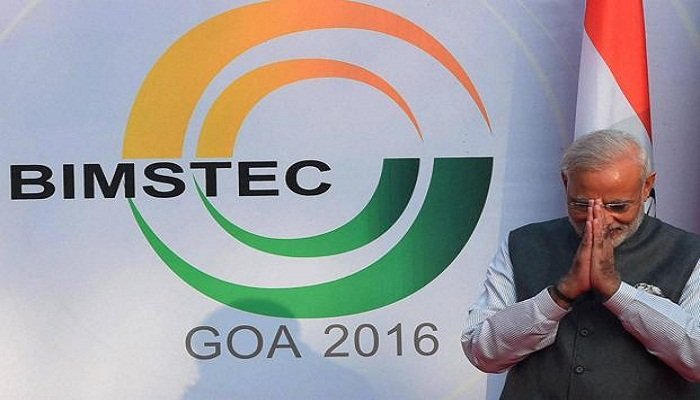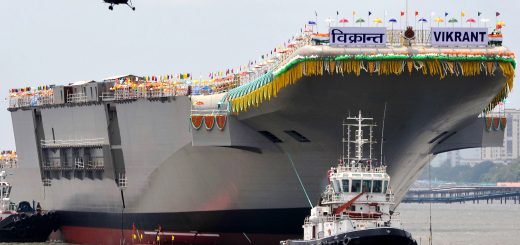BIMSTEC: A Desirable Alternative to SAARC and An Extra Feather to India’s Act East Policy

The 20th anniversary of BIMSTEC also coincides with the 25 years of ASEAN-India dialogue relationship. However, at this point of celebration, one needs to remember that BIMSTEC still falls short of its expectations – Dr. Sampa Kundu*
India’s recent enthusiasm favouring the Bay of Bengal Initiative for Multisectoral Technical and Economic Cooperation (BIMSTEC) was evident in October 2016 when New Delhi invited the members from the sub-regional initiative to participate in the Outreach Summit of the BRICS Forum in Goa. Prior to that, in 2014 India’s External Affairs Minister Sushma Swaraj announced that India’s Look East Policy (LEP) would now be called Act East Policy (AEP) and India’s neighbours from the East welcomed this reciprocity from New Delhi which was no more shying away from playing a proactive role in the region. It needs to be mentioned here that for some Southeast Asian countries, India’s active engagement with the region essentially plays a crucial role in balancing China’s increasing influence on the same. Even, the BIMSTEC leaders were keen that India needs to be more energetic in enhancing the capacity of the sub-regional grouping. Therefore, the BRICS Outreach Summit gave BIMSTEC a reason to rejoice. Through this summit, BIMSTEC received it’s first-ever chance to participate in an international event involving extra-regional powers as well as to draw plenty of attention from the media. The BIMSTEC Leaders’ Retreat Outcome Document, released on the occasion of the Outreach Summit, condemned terror attacks in the sub-region and mentioned, “…There should be no glorification of terrorists as martyrs.”** This indirectly hinted at the Pakistani-sponsored terror attacks in Uri and Pathankot in 2016 and provided India with a chance to win the diplomatic battle against Pakistan in South Asia. Many critics, in fact, argued that cancellation of a SAARC Summit in Islamabad in the same year and extending invitation to the BIMSTEC members (and not to the SAARC members), to join the BRICS Outreach Summit were linked to each other as India pursued to confirm support from its neighbours for its battle against the Pakistani-sponsored terrorism in India. Though the officials from the Ministry of External Affairs of India clarified that the choice of inviting the BIMSTEC members to join the BRICS Outreach Summit was finalised long before the decision to cancel the SAARC Summit in Islamabad; for many, the chronology of events provided a reason to believe that India is now looking towards BIMSTEC more vigorously than SAARC. The political rivalry between India and Pakistan never allowed SAARC to be the driving factor in an augmenting regional cooperation within South Asia. Hence, it would be pragmatic for India to work closely with BIMSTEC and ASEAN to expand regional cooperation in areas of mutual concerns including terrorism, violent extremism, transnational organised crime and insurgency; food security, energy; trade and investment, connectivity and infrastructure, poverty alleviation to name a few.
At the time of initiation, the foundation document of the then BIST-EC (Bangladesh India Sri Lanka Thailand Economic Cooperation), the Bangkok Declaration of 1997 made it clear that the proposed sub-regional grouping would never be any substitute to the existing regional organisations. Perhaps, the founding leaders were keen that neither ASEAN nor SAARC should think that four countries hailing from two separate regions are coming together to form a third and additional organisation to express their frustration with the existing regional cooperation initiatives. In sync with this concept, India saw BIST-EC, later renamed as BIMST-EC in 1997 itself when joined by Myanmar, as another opportunity to increase connectivity with ASEAN and not as an alternative to SAARC. Similarly, for the two Southeast Asian members of ASEAN, namely Thailand and Myanmar, BIMSTEC was an extra wing to be connected with South Asia. For them, ASEAN was always the first priority. Thus, in the noodle-bowl of several regional initiatives, BIMSTEC remained ignored for a long time. It took seven years for the member states to organise the first BIMSTEC Summit in Bangkok in 2004 and more than a decade to think about a permanent Secretariat to coordinate the activities of the grouping. In the meanwhile, BIMSTEC achieved two milestones, namely the Framework Agreement on BIMSTEC Free Trade Area, signed in 2004 and the BIMSTEC Convention on Combating International Terrorism, Transnational Organized Crime and Illicit Drug Trafficking, signed in 2009. Unfortunately, both are yet to be implemented. Apart from these, BIMSTEC Transport Infrastructure and Logistics Study (BTILS) result was finalised by the Asian Development Bank in 2013; four sub-groups on counter-terrorism and transnational crime (CTTC) have been set up; the BIMSTEC Trade negotiation Committee (TNC) has organised regular meetings and talks have been initiated to establish a BIMSTEC energy Center in India. In the meanwhile, two more BIMSTEC Summits have taken place – one in New Delhi in 2008 and the third one in Nay Pyi Taw in 2014. Nepal will host the fourth Summit of BIMSTEC. New Delhi, in the meantime, has hosted the first National Security Advisers meeting of BIMSTEC in early 2017 and Kathmandu played host to the BIMSTEC Foreign Ministers Meeting in August 2017. India also hosted the first-ever Track 1.5 Security Dialogue Forum of BIMSTEC involving think tanks and government officials in New Delhi in September 2017. Having said these, it can surely be argued that India’s rejuvenated interest towards BIMSTEC is definitely an outcome of two different developments. First is related to New Delhi’s growing frustration towards SAARC, primarily due to the geo-political tensions with Pakistan and the second development remains its stimulating outlook towards Southeast Asia vis-à-vis Asia-Pacific as expressed through AEP and the other way round, i.e, the Asia-Pacific’s desire to have India as a strong stakeholder in the region.

(Image: BIMSTEC Business Summit, New Delhi – October 14, 2016)
To sum it up, BIMSTEC serves two purposes for India- it makes it easier for New Delhi to share a common regional platform with its neighbours in South Asia (sans Pakistan) and secondly, BIMSTEC also establishes a linkage between South and Southeast Asia. The 20th anniversary of BIMSTEC also coincides with the 25 years of ASEAN-India dialogue relationship. However, at this point of celebration, one needs to remember that BIMSTEC still falls short of its expectations. Early ratifications of the BIMSTEC FTA, the counter-terrorism convention and finalisation and conclusion of the BIMSTEC Convention on Mutual Legal Assistance in Criminal Matters, BIMSTEC Framework Agreement on Transit, Trans-shipment and Movement of Vehicular Traffic as well as BIMSTEC Coastal Shipping Agreement; establishment of the BIMSTEC energy Center and revitalisation of the BIMSTEC Information Center should be prioritised without much delay. It has to adopt people-centric and output-oriented approaches to win the confidence of the common people across the sub-region. That would help it to become a facilitator of regional cooperation in a true sense.

*Dr. Sampa Kundu is Researcher at Institute for Defence Studies and Analyses, New Delhi
**Obtained from Press Information Bureau, http://pib.nic.in/newsite/PrintRelease.aspx?relid=151717, October 17, 2016, accessed on 5 October 2017.
The views and opinions expressed in this article are those of the authors and do not necessarily reflect the views of The Kootneeti Team.


















